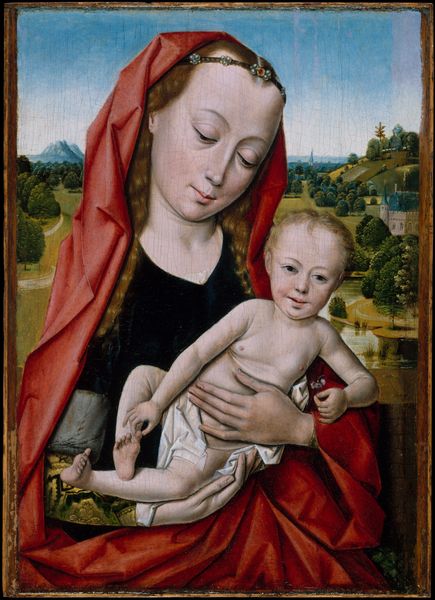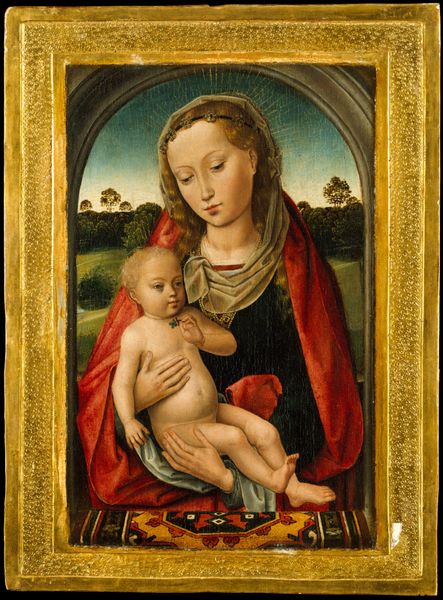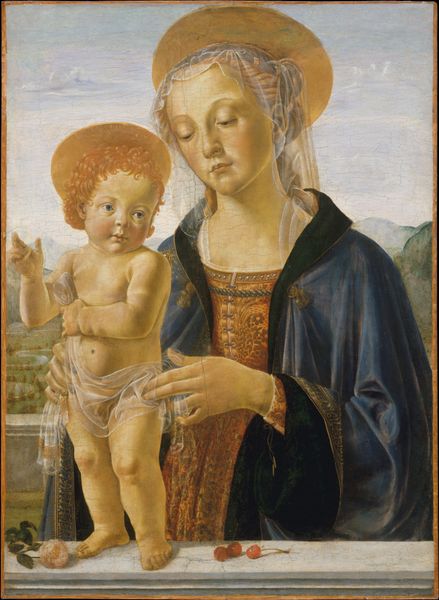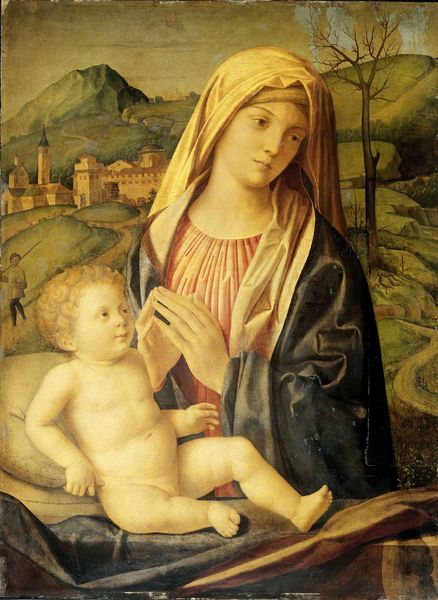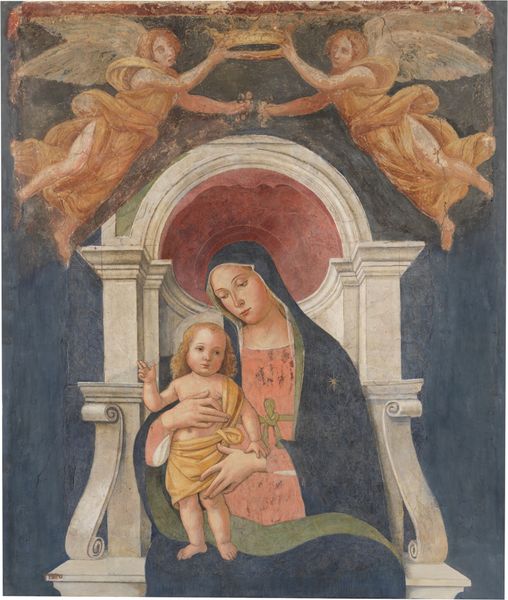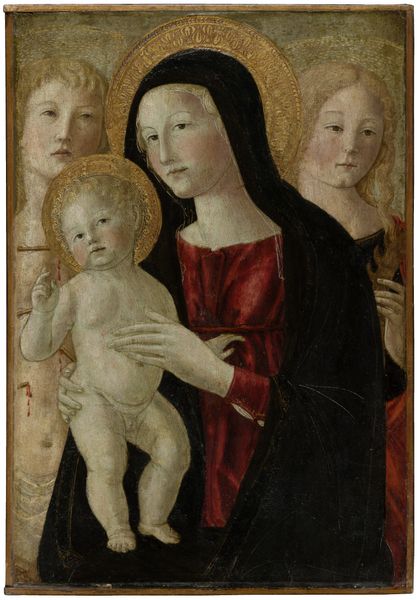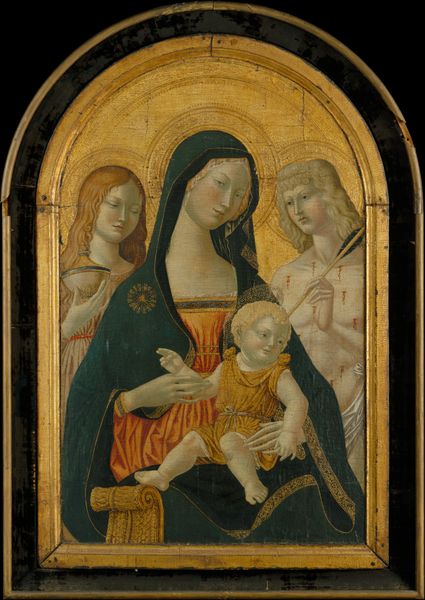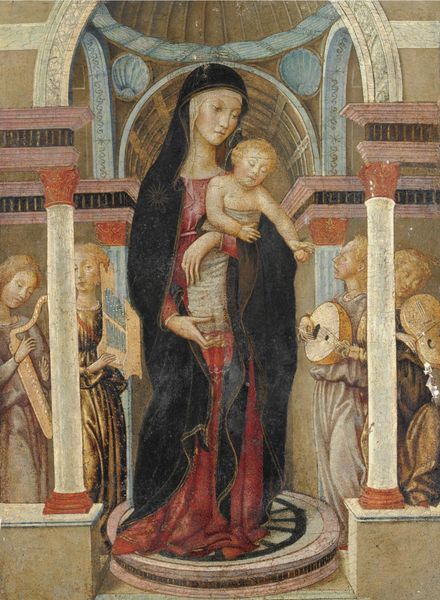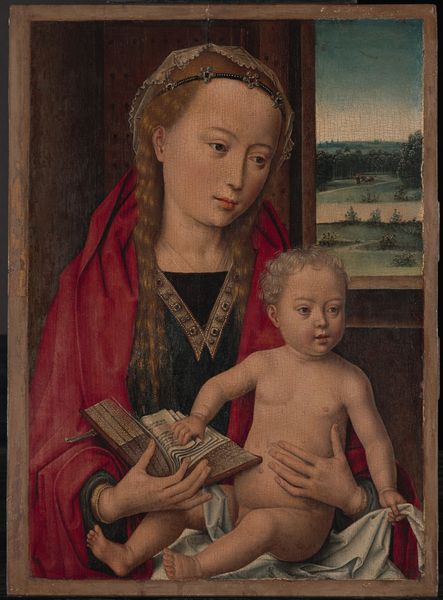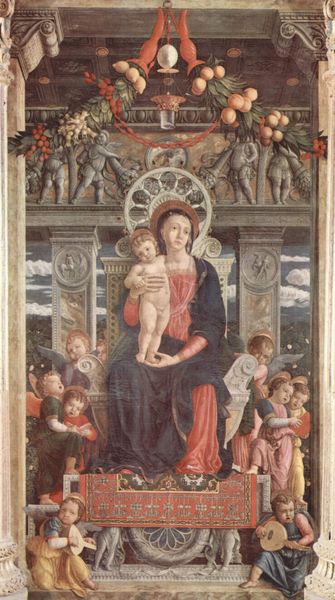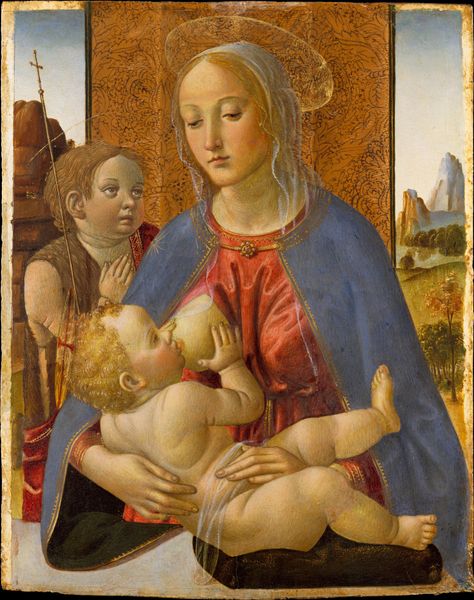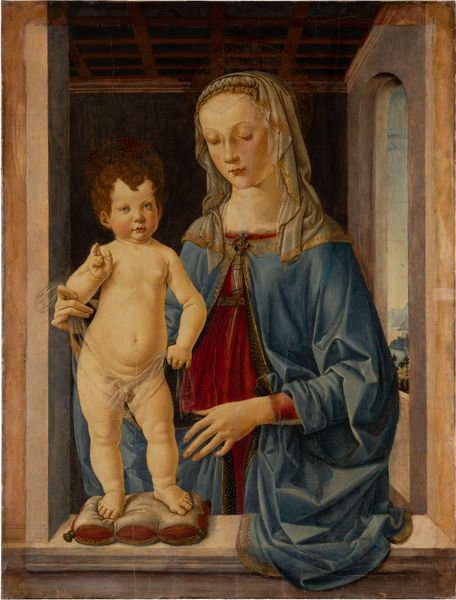
The Translation of the Holy House of Loreto 1485 - 1495
0:00
0:00
painting, oil-paint
#
narrative-art
#
ship
#
painting
#
oil-paint
#
figuration
#
madonna
#
oil painting
#
child
#
history-painting
#
italian-renaissance
#
angel
Dimensions: 33 1/4 x 21 5/8 in. (84.5 x 54.9 cm)
Copyright: Public Domain
Editor: So, this is Saturnino Gatti's "The Translation of the Holy House of Loreto," painted sometime between 1485 and 1495 using oil. I find it incredibly unique—it's almost dreamlike in its depiction of this floating house. What do you make of it? Curator: The dreamlike quality, as you call it, stems from the potent symbolism layered throughout. The house itself, carried by angels, represents the Holy House of Loreto, believed to be the Virgin Mary’s home miraculously transported from Nazareth to Italy. But consider *why* this event would need artistic representation. Editor: Because it’s a miracle? Curator: Indeed. Miracles served as powerful visual confirmations of faith during the Renaissance. Note the ship. Doesn't it recall other art-historical symbols of journey and salvation? How does its placement within the painting’s composition add to the visual narrative? Editor: Right, it almost seems to underscore the movement, the *translation*, taking place. Curator: Precisely! Consider also how the Madonna and Child, icons of maternal love and divine grace, are situated atop the house. And what does it mean to you, that angels seem to both support the house and offer a crown? Editor: So, it's this incredible convergence. Faith, history, the divine—all visualized through these familiar and striking images. Curator: Gatti is using visual shorthand. These aren't just pretty pictures; they are designed to activate centuries of cultural memory. The emotional weight carried by such figures as the Madonna touches something deep within our collective psyche. Editor: I never thought about it in terms of cultural memory before. Thanks so much.
Comments
No comments
Be the first to comment and join the conversation on the ultimate creative platform.

